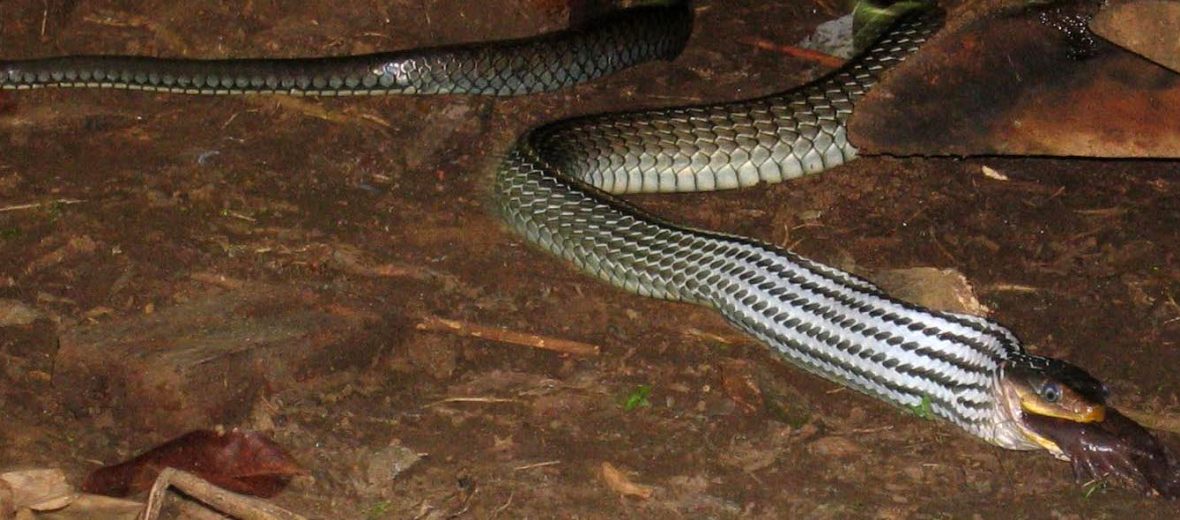
The mussurana, aka musurana, is the common name of a group of snake hunting serpents. There are 7 known species of these snakes. They are endemic to Central America and South America and some surrounding islands. Even though these snakes face the threat of habitat destruction, they are abundant but have a decreasing population throughout all their species. They are currently listed as Least Concern by the IUCN.
First the Stats…
Scientific name: Clelia
Weight: Up to 6.3 lbs.
Length: Up to 8.2 feet
Lifespan: Up to 12 years
Now on to the Facts!
1.) Mussuranas engage in ophiophagy (snake eating).
2.) These snakes prey on mice, rats, and lizards and use venom to kill these creatures. They also prey on a variety of snakes, including venomous pit vipers and utilize constriction to kill these animals.
3.) They also go by the names zopilota and cribo.
4.) The mussurana has between 10 – 15 teeth on their upper jaw, followed by 2 enlarged rear fangs, in the back of the jaw. These rear teeth are hollow and used to deliver venom.
5.) These 2 larger back teeth are also used to help push prey into their stomach.
But wait, there’s more on the mussurana!
6.) Due to the fact that they utilize both venom and constriction they are called pseudoboas.
7.) Even though they are venomous and lethal to rodents, their venom poses no threat to humans or larger animals, if bitten. They are reluctant to bite, when being handled, anyway.
Did you know…?
Mussuranas are immune to the venom of the vipers they consume. The only exception to this is the fact that they are not immune to coral snake venom.
8.) These snakes are diurnal (active during the day).
9.) In some regions, farmers will keep mussuranas as pets to help keep the population of vipers down. This aids in keeping their livestock safe and alive.
10.) Females produce up to 25 eggs that hatch in up to 120 days. Snakelets are born precocial (totally self sufficient).
11.) Due to the reduction in venomous snakes, throughout their ranges, these snake’s populations are decreasing more and more.
Now a Short Mussurana Video!
Be sure to share & comment below! Also, check out the Critter Science YouTube channel. Videos added regularly!
Want to suggest a critter for me to write about? Let me know here.
Think you know a lot about critters? Try your hand at these fun, free quizzes:



